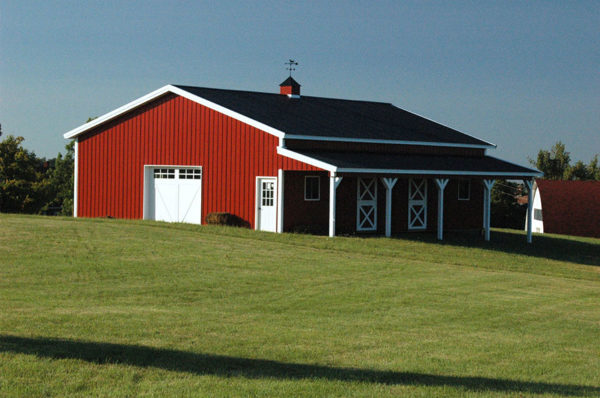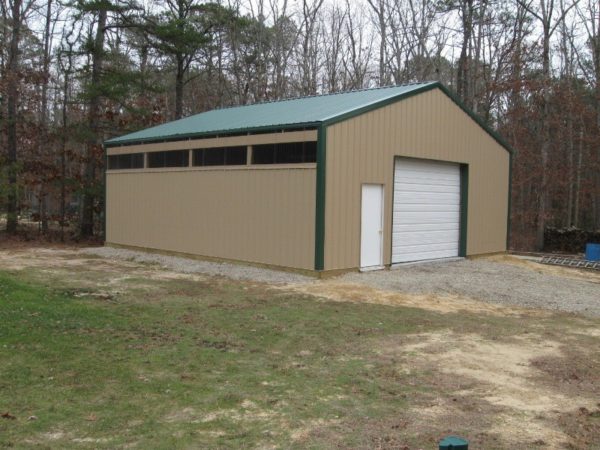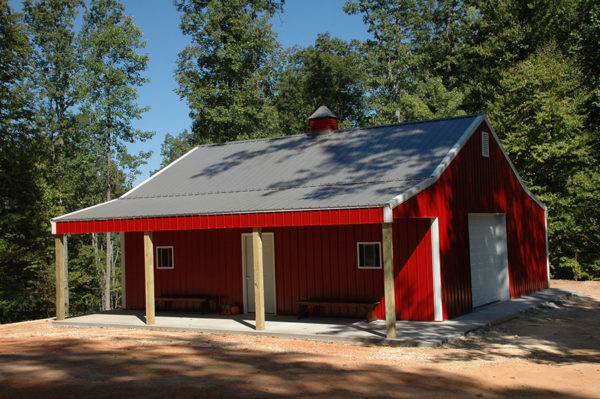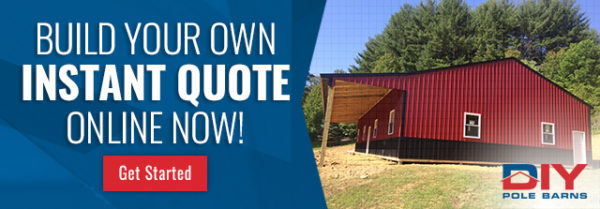The pole barn has become a staple for many across the country. Farmers, equestrians and even your everyday homeowner have discovered how cost-effective and functional pole barns can be. Between creating the perfect pole barn workshop to having a place to store your car, there are countless uses for the modern pole barn. But from where and when did American pole barns originate?
Learn the history behind modern post-frame construction and the developments that helped this style of building become what it is today.
The 1930s: The Rise of the American Pole Barn
While post-building construction has existed for centuries and was a staple of Colonial America, the American-made pole barns that we’re most familiar can be traced back to the 1930s. The economic impact of the Great Depression and Dust Bowl combined made it necessary for agriculture to adapt. As it turned out, used utility poles, like telephone poles, were an affordable and abundant material. Farmers would purchase these poles and stick them in the ground, attaching metal roofs to them, creating “telephone pole barns.”
The simplicity of these buildings made them a perfect solution. Because they used fewer materials, they were cheaper and easier to setup – even before convenient pole barn kits existed. As farming technology continued to develop, the need for larger storage housing became necessary. This new technique to build American pole barns was perfectly suited to scale up and accommodate the larger machinery, and their popularity spread across the nation’s agricultural communities.
While the concept of early pole barns was largely beneficial, they did come with unique problems. For one, utility poles were originally recycled due to rot problems. While the rotted wood was mostly discarded, it meant that many farmers built their barns with compromised materials. These flimsy poles also were placed directly into the soil. This left them susceptible to more rot and unstable foundations.
Modern American Pole Barns

Many advancements have been made in the materials and design of modern pole barns. The biggest improvement has been in the poles themselves. While old pole barns used untreated, round poles, modern ones are much more structurally sound. In addition to being pressure-treated and resistant to rot, they’re also cut to be squared-off. This ultimately produces a more reliable building with the same benefits – lower cost and fewer needed materials – as older American pole barns.
Another key advancement is in the placing of the poles themselves. Early poles were placed directly into the soil – leaving them vulnerable to fungi in the soil. Products such as Post Protector, Plasti-Sleeve and Postsaver counter this by creating an impenetrable membrane around the wood post. Also, modern pole barns can be anchored to directly to concrete slab or foundation utilizing a product such as Sturdi-Wall brackets.
From Agriculture to Your Backyard
The origins of American-style pole barns were firmly set in agriculture for storing farm equipment, horses or livestock. Since then, they’ve grown to offer so much more! You’re just as likely to see a pole barn garage as you are to see a standard pole barn. Due to their scalability, low-cost and easy setup, they’re great for even garages in the suburbs.

Likewise, pole barn workshops have shown incredible popularity with many Americans as a way to get the space they need for their favorite hobbies or jobs. Instead of spending half a year constructing a building for their Mancaves, garage workshops or home studios, they can opt for the quicker and less costly pole barn style building.

Bonus Pole Barn Trivia: The Traditional Red Barn
Have you ever noticed many of the barns you see across the country are red? It’s not just you – red barns are actually one of the most common colors for modern barns, and it stems from tradition.
Centuries ago, when barns were being built, farmers would seal their barns with oil to help protect against the weather. The most common oil to use was linseed oil – which is a tawny-colored oil from flax plants. If you’re familiar with linseed oil, you may be saying “Wait a minute, isn’t linseed oil more orange than red?” As it turns out, clever farmers began adding rust, which is poisonous to fungi like mold and moss, to their oil mixtures. The result was the barn red color to which we’ve become accustomed.
Lock in a Quote for Your All-American Made Pole Barn Today!
If you’re ready to build your dream pole barn, lock in a quote with DIY Pole Barns using our Instant Quote tool! Have questions? Call our knowledgeable staff at (937) 547-9100.
Connect with us on social media!




